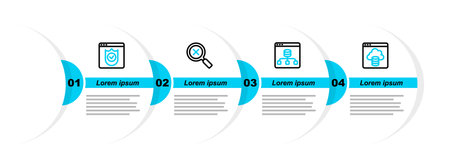Understanding Internal Linking in Modern UK SEO
Internal linking stands as a foundational pillar in the architecture of effective on-page SEO, particularly within the ever-evolving landscape of the UK’s digital environment. As search engine algorithms have matured, the role of internal links has shifted from being merely functional pathways to critical signals that influence site authority, content discoverability, and user experience. In the context of 21st century UK SEO, understanding the nuances of internal linking is essential for brands and publishers striving to enhance their online visibility.
The Fundamentals of Internal Linking
At its core, internal linking refers to hyperlinks that connect one page of a website to another within the same domain. This network of connections guides both users and search engines through your site’s hierarchy, distributing link equity and clarifying topical relevance. When implemented strategically, internal links help to establish priority pages, reinforce key themes, and ensure that high-value content remains easily accessible to visitors and bots alike.
Evolution within the UK Search Landscape
The competitive nature of the UK digital marketplace has driven significant innovation in how internal links are structured. Historically, simple navigation menus and footer links sufficed. Today, however, successful UK websites leverage contextual linking strategies—embedding relevant anchor text within content to create logical pathways between related topics. This evolution aligns with Google’s focus on semantic relevance and user intent, rewarding sites that facilitate meaningful journeys through well-connected content clusters.
Implications for Site Authority and Navigation
Effective internal linking extends beyond algorithmic optimisation; it enhances user engagement by reducing friction in site navigation. For British businesses and publishers aiming to build trust and authority in search results, carefully mapped internal links signal expertise and reliability. They allow for deeper exploration of topics, increase time on site, and distribute ranking potential more evenly across important pages. In summary, mastering internal linking is not just a technical exercise—it is a strategic necessity for thriving in the competitive world of 21st century UK on-page SEO.
2. The Importance of Readable Structure for British Audiences
When optimising on-page SEO for UK-based websites, a readable and logical structure is not simply a best practice—it’s a necessity. British users have distinct expectations regarding clarity, coherence, and accessibility. An intuitive content hierarchy not only satisfies human visitors but also facilitates search engine crawlers in efficiently indexing the site. Let’s analyse why readable structure holds such significance in the context of 21st-century UK digital behaviour.
Meeting User Expectations: Clarity and Trust
The British audience values straightforward communication and well-organised information. A clear structure—using headings, bullet points, and concise paragraphs—helps establish trust and authority. When content flows logically, users are more likely to stay engaged, reducing bounce rates and increasing session duration, both vital ranking signals.
Enhancing Engagement Through Accessibility
Accessibility is crucial for inclusivity and engagement. By following the principles of readability—such as using plain English, short sentences, and ample white space—websites cater to a broader demographic, including those with cognitive differences or lower reading proficiency. This commitment reflects positively on brand reputation in the UK, where accessibility standards are increasingly enforced.
Structure Elements That Impact SEO & User Experience
| Element | User Benefit | SEO Benefit | UK Cultural Relevance |
|---|---|---|---|
| Clear Headings (H1-H3) | Easier scanning; find key info quickly | Improved crawlability; keyword emphasis | Matches British preference for orderliness |
| Short Paragraphs | Less intimidating; encourages reading | Increased dwell time | Caters to busy UK professionals/students |
| Bullet Points/Lists | Simplifies complex information | Higher featured snippet potential | Aligns with direct communication style |
| Internal Links with Descriptive Anchor Texts | Smoother navigation; discover related topics easily | Distributes link equity across pages | Aids exploration of locally relevant content |
| Bespoke Section Labelling (e.g., FAQs) | Makes support easy to find | Adds semantic structure for search engines | Addresses common UK user queries directly |
Crawlability: Helping Search Engines Help You
A coherent site structure aids search engine bots by providing logical pathways through content. This results in more comprehensive indexing and better contextual understanding of page relevance—a factor that can make or break rankings within highly competitive UK SERPs.
Ultimately, aligning your website’s structure with British user expectations not only improves organic visibility but also fosters trust and loyalty among your target audience.

3. Algorithmic Trends Shaping On-Page SEO in the UK
Search engine algorithms have evolved dramatically in recent years, especially within the UK digital landscape. Today, these algorithms prioritise not only the presence of relevant content but also the structural integrity of a website.
Coherent Internal Linking: A Core Algorithmic Focus
Google’s UK-specific ranking signals increasingly value robust internal linking frameworks. Sites that offer clear pathways between related pages enable both search engines and users to navigate efficiently. This interconnectedness helps distribute page authority and context, which supports higher rankings for targeted keywords and enhances topical relevance—a crucial advantage for British businesses competing in local search results.
Logical Content Organisation: Serving Search Intent
Modern algorithms reward sites that present information in a structured, user-friendly format. This is particularly evident in featured snippets and People Also Ask boxes common on UK SERPs (Search Engine Results Pages). Proper use of headings, concise paragraphs, and intuitive flow not only aligns with algorithmic preferences but also matches the expectations of UK audiences seeking clarity and direct answers.
UK-Specific Search Signals: Local Nuance Matters
The role of localised content and linking strategies cannot be overstated. Algorithms assess the relevance of internal links based on regional intent—such as using local vernacular, referencing UK regulations, or connecting to regionally significant resources. Well-organised content that reflects British culture and values is more likely to be surfaced in geographically targeted searches, reinforcing the importance of tailored on-page SEO practices.
4. Best Practices for Internal Linking on UK Websites
Effective internal linking is at the heart of successful on-page SEO strategies for modern UK websites. By prioritising link maps, anchor text relevance, and topical hierarchies tailored to British audiences, site owners can significantly enhance user experience and search engine visibility. Below are actionable recommendations for optimising internal linking in line with current UK SEO expectations.
4.1 Building Effective Link Maps
A structured link map ensures that both users and search engines can easily navigate your content. Begin by mapping out primary pages (such as service categories or cornerstone content) and then identify supporting sub-pages. For UK websites, consider local navigation habits—users often expect clear menus, logical breadcrumbs, and prominent links to key regional resources. Maintain a balance between depth and breadth: avoid orphan pages and ensure that every important page is reachable within three clicks from the homepage.
Sample Link Map Structure
| Level | Example Page | Recommended Internal Links |
|---|---|---|
| Homepage | / | Main categories, About Us, Contact, Blog |
| Category Page | /services/marketing/ | Individual service pages, case studies, FAQ |
| Subpage | /services/marketing/social-media/ | Related articles, pricing, consultation form |
4.2 Anchor Text Strategies for the UK Market
Anchor text should be descriptive yet natural, reflecting how British users search and speak. Avoid generic phrases like “click here” or excessive use of exact-match keywords. Instead, use contextually relevant terms that align with UK English conventions and local search intent (e.g., “digital marketing advice in London” rather than “digital marketing tips”). Diversify anchor texts across different links to prevent over-optimisation and provide richer semantic signals to search engines.
Recommended Anchor Text Types
| Type | Example Usage (UK English) | Purpose |
|---|---|---|
| Branded + Location | “Find out more about Acme’s Manchester office” | Local trust & authority building |
| Descriptive Keyword Phrase | “SEO consultancy services for SMEs” | Cater to specific queries & topics |
| Navigational Phrase | “Explore our pricing structure” | Smoother user journey & conversions |
| Synonyms & Related Terms | “Content optimisation guidance” instead of always using “SEO advice” | Diversification & improved topical coverage |
4.3 Topic Relevance Hierarchies for UK Audiences
Create a clear topical hierarchy reflecting the interests and needs of your British audience. Cluster content around core themes—for instance, group all “London property guides” under a main “Property Advice” section. Ensure that internal links reinforce this hierarchy by connecting related articles both upwards (to parent topics) and laterally (to sibling topics). This not only supports better crawling but also positions your site as an authoritative resource on UK-specific subjects.
Action Steps:
- Avoid deep nesting: Keep important content within three clicks from the homepage.
- Pilot topical clusters: Use parent-child-sibling linking to enhance semantic relationships.
- Edit regularly: Update older posts to include new internal links as your site grows.
The application of these best practices ensures your internal linking strategy not only supports SEO algorithms but also resonates with the browsing preferences of a UK-based audience.
5. Optimising Content Structure for UK SEO Success
Creating a well-structured website is foundational to modern on-page SEO, especially when targeting the UK audience. Effective content structuring not only improves readability for British users but also signals relevance and clarity to search engines like Google. Below, we explore actionable techniques to optimise your site’s structure in line with user behaviour in the UK and the latest ranking algorithms.
Understanding User Behaviour in the UK Context
UK web users typically value concise information, clear navigation, and logical progression through content. It is essential to adapt your structure to these expectations by using local language variants and cultural references that resonate with your audience. For example, employing British English spellings (such as “optimise” instead of “optimize”) and integrating regionally relevant examples enhances engagement and trust.
Logical Hierarchy and Heading Usage
Organise your content using a logical hierarchy of headings (<h1> to <h5>) to break down information into digestible sections. This not only aids UK readers in scanning your page efficiently but also helps search engines understand the importance of each topic. Use descriptive, keyword-focused headings that match common UK search queries, ensuring that each section naturally flows from general concepts to more specific details.
Internal Linking Within Structured Content
A robust internal linking strategy guides users through related topics, reducing bounce rates and increasing session duration—two metrics favoured by search algorithms. Place contextual links within relevant sections, using anchor text that reflects British terminology where appropriate. For example, linking from “Council Tax Bands Explained” to “How Council Tax is Calculated in England” strengthens topical relevance and supports both user discovery and SEO performance.
Paragraph Length and Readability
Break up content into short paragraphs of two to four sentences, accommodating the reading preferences of UK audiences who often access content via mobile devices. Employ bullet points, numbered lists, and bolded key terms for enhanced scannability. Additionally, incorporate local idioms or familiar phrases judiciously to foster a sense of connection with British readers while maintaining clarity for algorithmic parsing.
Aligning With Search Engine Algorithms
Search engines increasingly prioritise well-structured pages featuring semantic markup and clear thematic organisation. Utilise schema.org structured data where appropriate—such as <article>, <breadcrumb>, or <FAQPage>—to provide explicit context about your page’s purpose. This extra layer of structure helps Google better interpret your content’s relevance for UK-specific queries, ultimately improving rankings and visibility.
By systematically applying these techniques, you position your website for optimal engagement with British users and search engines alike—ensuring long-term SEO success within the competitive landscape of 21st century UK digital marketing.
6. Measuring the Impact of Internal Linking and Structure
To ensure your UK-focused on-page SEO strategy is truly effective, it is crucial to systematically measure the impact of internal linking and readable site structure. Evaluating these elements not only helps you understand their contribution to organic search visibility but also guides ongoing optimisation efforts tailored to the preferences of British search users.
Essential Metrics for Performance Tracking
Begin by monitoring key performance indicators (KPIs) that reflect both user engagement and search engine responses. These include:
- Organic Traffic Growth: Track increases in visitors landing from non-paid search results, especially on internally linked pages.
- Average Session Duration: A well-structured site with logical internal links keeps users browsing for longer, signalling quality to Google UK.
- Bounce Rate: Lower bounce rates often indicate that users are successfully navigating through related content via internal links.
- Page Depth Per Session: This measures how many pages a user visits per session—higher numbers can suggest effective internal navigation.
Tools Tailored for the UK Market
Several analytics platforms offer granular insights into how internal linking and readability affect your website’s performance in Britain:
- Google Analytics 4 (GA4): Provides in-depth reports on user behaviour, traffic sources, and site navigation paths specific to UK audiences.
- Google Search Console: Useful for tracking organic impressions, clicks, and indexing status of key landing pages connected through internal links.
- Screaming Frog SEO Spider: A popular tool among UK SEOs, it allows comprehensive audits of your site’s internal linking structure and identifies orphaned or poorly linked content.
Methods for Ongoing Optimisation
Adopt a data-driven approach by regularly conducting A/B testing and content experiments. For instance, implement new internal link placements or adjust heading structures on select pages, then compare performance metrics before and after the changes. Additionally, use heatmapping tools such as Hotjar or Microsoft Clarity to visualise real user journeys across your UK website, highlighting navigational strengths and weaknesses tied to structural choices.
Localised Insights for Competitive Advantage
The nuances of British search behaviour—such as preference for concise language or local terminology—can be revealed through segmented analysis. Leverage geo-specific reporting within your analytics suite to distinguish trends unique to UK visitors versus international audiences. This enables you to refine internal linking anchor text and page hierarchy for maximum relevance within the competitive British digital landscape.
Summary: From Metrics to Market Leadership
By systematically measuring the impact of internal linking and readable site structure using targeted metrics, trusted tools, and methodical testing, brands operating in the UK can secure higher organic visibility, deeper engagement, and a measurable edge over competitors. In the ever-evolving arena of 21st century British SEO, actionable insights translate directly into sustained online authority.


